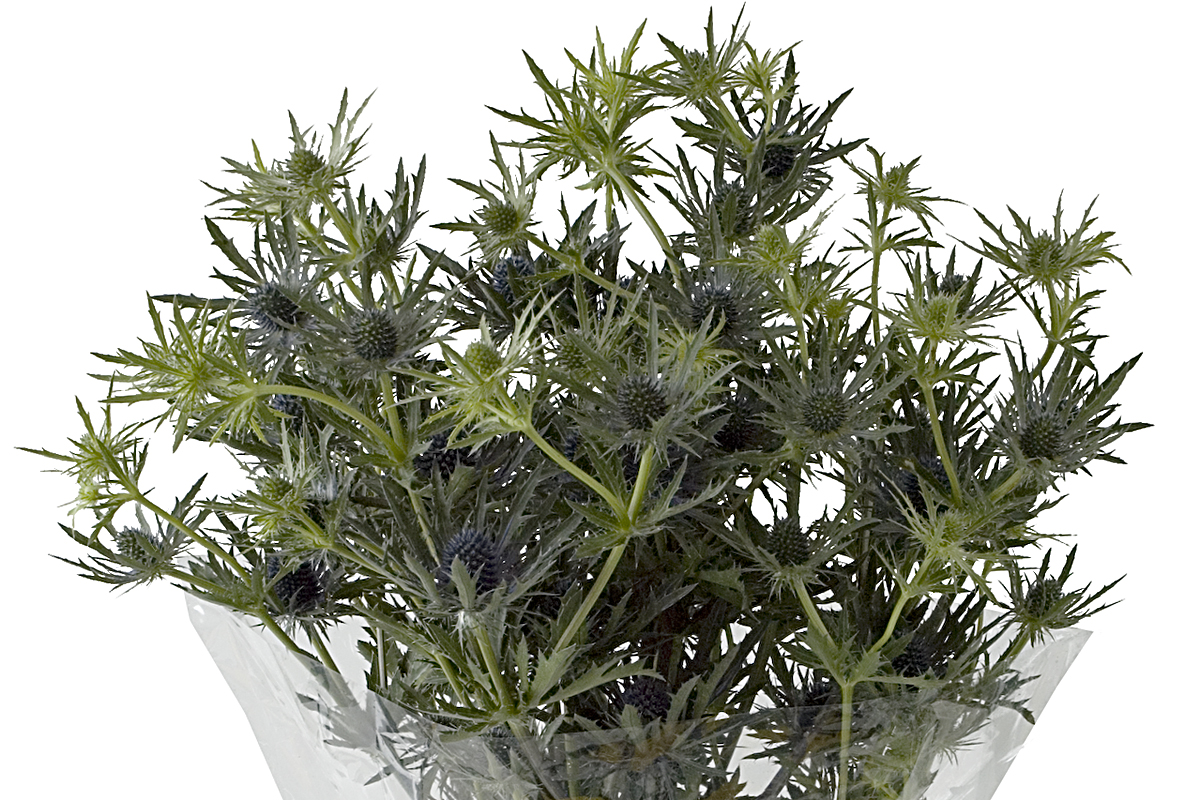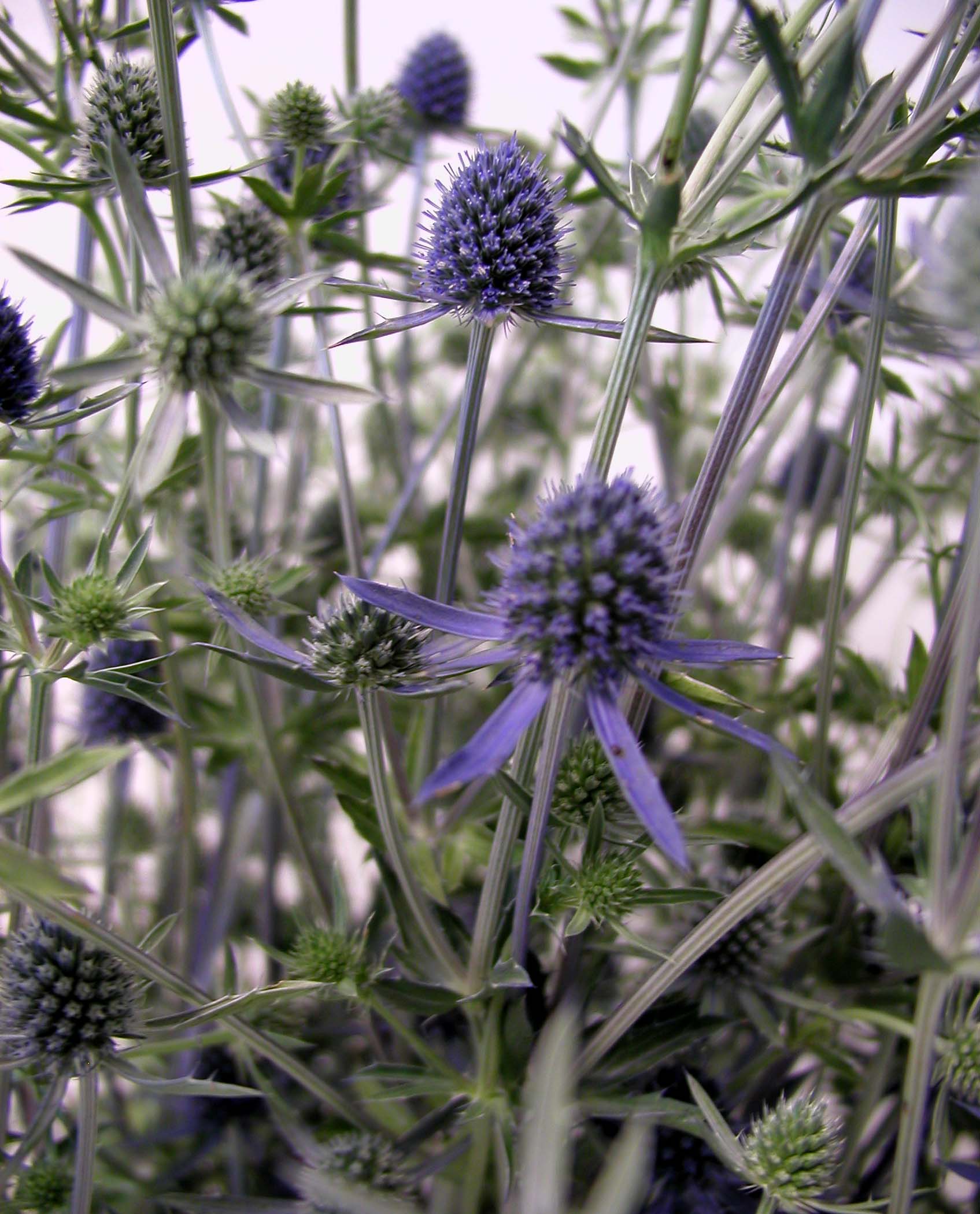

Eryngium
Recognized by a spiny collar (bracts) around a raspberry-like flower head.
Grayish green leaves on stout stems in a stance that is angular yet erect. Thistle
like flowers in all shades of blue...from blue-green, navy to steel blue and sky blue.
HISTORY: Native to damp grasslands of South America. Cultivated in Europe since 1567, and originally grown for traditional healingpurposes. The roots were used to make tonic water and were alsofrequently candied.
Download Eryngium Care & Handling PDF
